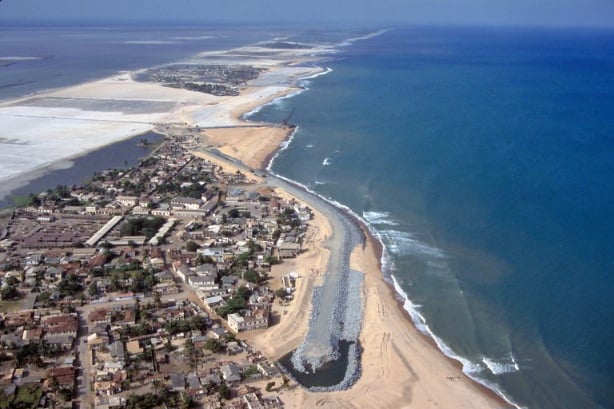Keta’s long-standing battle against coastal erosion demands more than temporary defenses—it calls for a transformational approach that safeguards both the shoreline and the local economy. A harbour, strategically engineered, could be the game-changer, providing stability, growth, and opportunity for generations. Drawing from the remarkable success of Tema Harbour, we examine its development and extract strategic insights to shape a future-ready harbour for Keta.
Tema Harbour: A Case Study in Visionary Infrastructure
Tema Harbour’s evolution is no accident—it is the result of deliberate policy choices, rigorous engineering, and economic foresight. Commissioned in 1962 under Kwame Nkrumah’s leadership, the harbour was designed to replace inefficient landing sites along the Gold Coast, enabling Ghana to consolidate maritime trade under a single, well-equipped facility. The project, led by Theodore S. Clerk, involved extensive land reclamation and deep-water berth construction to accommodate high-capacity vessels, setting the stage for Tema’s rise as West Africa’s leading trade hub.
Strategic Success Factors: Lessons for Keta
The core elements behind Tema’s enduring success provide a blueprint for designing a high-impact, resilient harbour at Keta:
1. Location-Driven Engineering
Tema’s geographical positioning facilitated deep-water docking, ensuring accessibility for international shipping. Keta’s harbour must be strategically positioned with hydrographic studies guiding placement, ensuring both shoreline protection and maritime viability.
2. Integrated Economic Model
Tema Harbour functions as more than a transit port—it is a commercial ecosystem, incorporating warehouses, cold stores, fishing hubs, transport terminals, and logistics facilities. Keta must follow this multi-purpose design, creating an economic anchor that supports trade, tourism, and fisheries.
3. Continuous Infrastructure Development
Tema has evolved through phased expansions, introducing container terminals, automation, and modern cargo management. Keta’s harbour must be future-proof, designed with scalability to meet growing industrial and maritime needs.
4. Workforce Development and Community Empowerment
Tema’s success is not just in its infrastructure but its people. Employment opportunities surged through structured training programs, ensuring local talent fuels port operations. Keta’s harbour must integrate workforce readiness initiatives, positioning the local community at the heart of its operations.
Actionable Recommendations: Structuring Keta’s Harbour for Success
For Keta’s harbour to yield long-term dividends, its development must be holistic, adaptable, and investment-friendly. Key considerations include:
Multi-Sector Integration: Combining fishing docks, tourism zones, and trade logistics to maximize economic utility. Sustainable Coastal Engineering: Utilizing eco-conscious reinforcement techniques that prevent erosion migration. Public-Private Collaboration: Securing strategic partnerships with local enterprises and global investors, ensuring financial sustainability. Regulatory Frameworks: Establishing robust maritime governance policies to streamline operations, protect local industries, and ensure ethical resource management.
Keta’s potential to emerge as Ghana’s next maritime powerhouse is undeniable—if planned with foresight, innovation, and inclusive development. The success of Tema Harbour proves that visionary infrastructure, strategic investment, and community engagement** can turn coastal vulnerabilities into thriving economic centers. With bold execution, Keta’s harbour can become a defining legacy, not just for erosion control but for regional prosperity.
🚀 Keta is ready. Ghana must act NOW. Let’s work together to turn coastal vulnerabilities into a thriving maritime legacy!
Retired Senior Citizen
Teshie-Nungua
[email protected]
📢 Sign the Petition & Demand Action: 🔥
#KetaHarbourNow #CoastalResilience #EconomicTransformation


